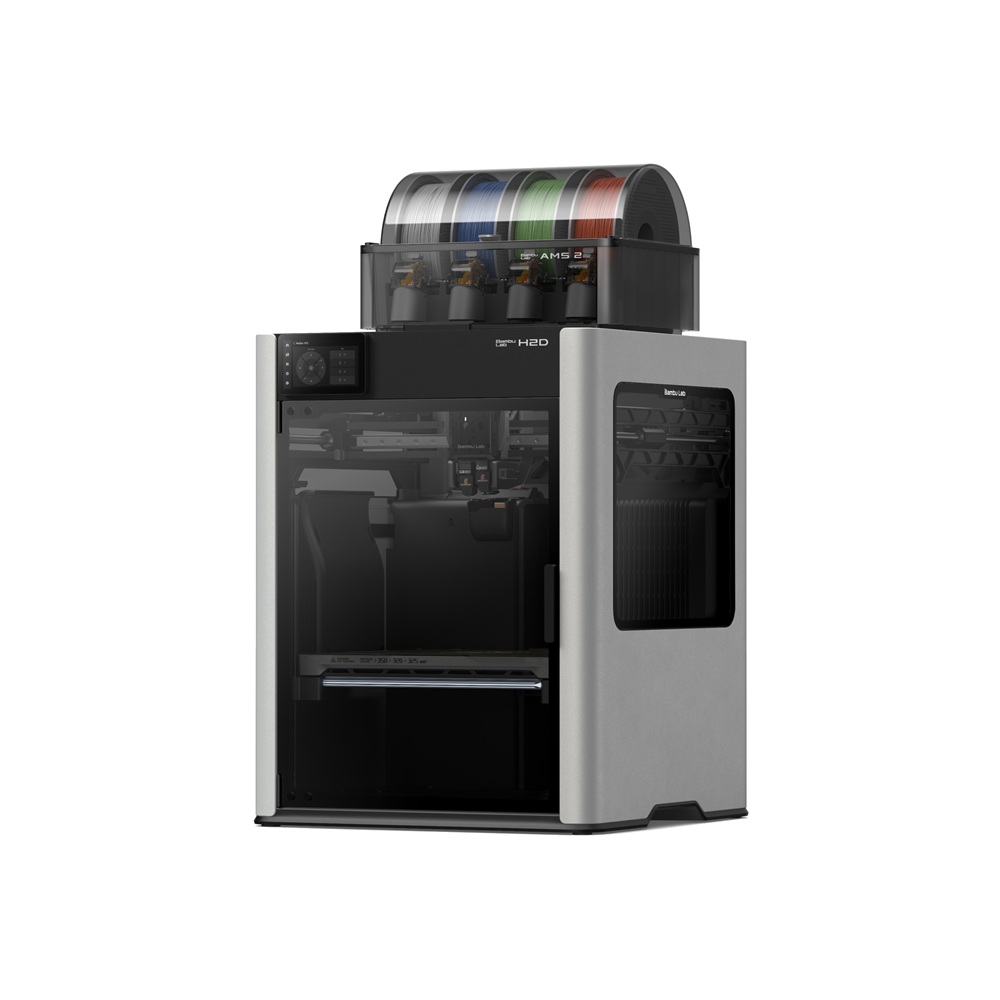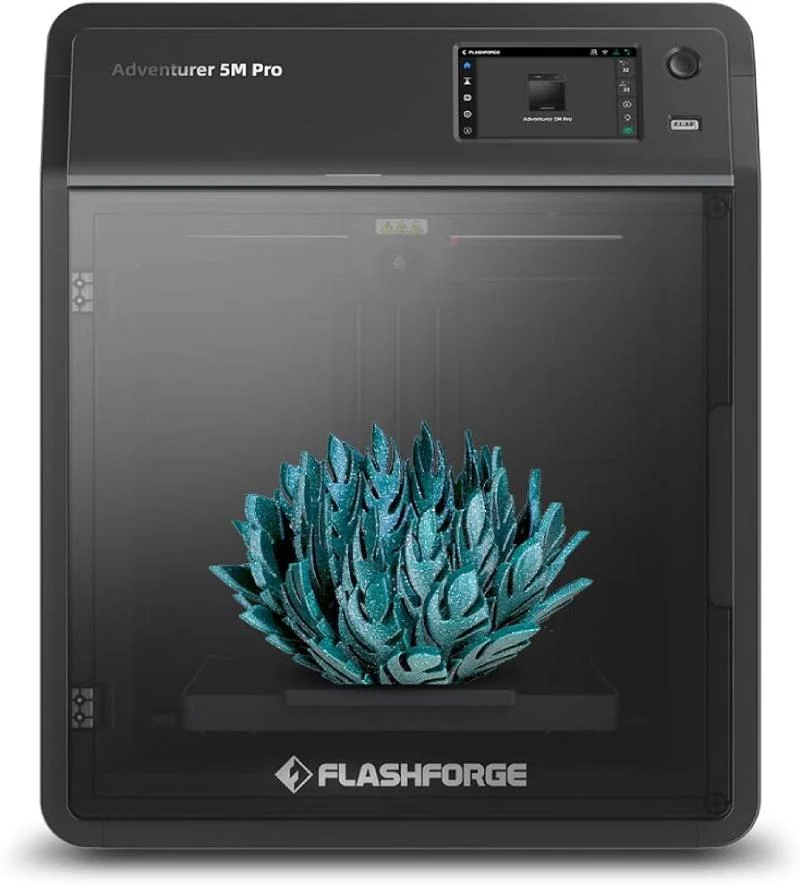Compare H2D vs Adventurer 5M PRO
Comparison between the best 3D printers
Choose the best 3D printer at the best price. The cheapest 3D printers are here.
Buy a 3D printer here with 3D Fila.
 |
 |
|
| Model | H2D |
Adventurer 5M PRO |
| Printing Material | Filament | Filament |
| Buy Filament for Bambu Lab H2D | Buy Filament forFlashforge Adventurer 5M PRO | |
| Estimated price | $1899,00 | $599,00 |
| Manufacturer | Bambu Lab | Flashforge |
| Release Year | 2025 | 2023 |
| Print Volume [mm] | 350x320x325 | 220x220x220 |
| Printer Size [mm] | 492x514x626 | 380x400x453 |
| Weight [kg] | 42,3 | 10,8 |
| Power Loss Recovery | YES | YES |
| Enclosed printer | YES | YES |
| Bed Leveling | Automatic | Automatic |
| Filament End Sensor | YES | YES |
| Bed type | Heated | Heated |
| Power supply system | Direct Drive | Direct Drive |
| Standard nozzle | 0,4 | 0,4 |
| Maximum Nozzle Temperature [°C] | 350 | 280 |
| Maximum Bed Temperature [°C] | 120 | 110 |
| Maximum printing speed [mm/s] | 600 | 600 |
| Filament holder | YES | YES |
| Camera for supervision | YES | YES |
| Recommended filaments | PLA, PETG, ABS, ASA, TPU, PVA, Nylon (PA) | PLA, PETG, TPU, PLA-CF, PETG-CF |
| Recommended slicers | Bambu Studio | FlashPrint 5 |
| Maximum Resolution [mm] | 0,01 | 0,1 |
| Processor | ||
| Display | Touchscreen 5'' | Touchscreen 4,3'' |
| Power Supply | 350 W | |
| Connectivity | Wifi, Bambu bus, Cartão SD | Wifi / Ethernet / USB |
| Operating systems | Windows, Mac, Linux | Windows, Linux, Macbook |
| Date of registration in the system | 2025-03-31 | 2024-07-09 |
| Release date | 2025 | 2023 |
| Extra features | Bambu Labs H2D combines high-speed 3D printing with a chamber heated up to 65 °C, dual extrusion with automatic nozzle switching, an AMS for filament drying and exchange, and AI sensors that detect failures. It offers optional laser and digital cutting capabilities, features intelligent calibration through computer vision, vibration control, enhanced fire safety, and real-time camera monitoring. | The Flashforge Adventurer 5M PRO features advanced features such as a CoreXY motion system, direct drive extruder, print speeds of up to 600mm/s and maximum acceleration of 20,000mm/s². It features fast nozzle changes, automatic calibration, active vibration compensation, camera monitoring, time-lapse video, HEPA and carbon filters for particles and VOCs, and an intuitive 4.3-inch touchscreen interface. Ideal for printing materials such as PLA, PETG, ABS and TPU. |
| Support for multiple colors and materials (AMS and CFS) | YES | NO |
Notes * |
||
| Cost-benefit | 7 / 10 | 7 / 10 |
| Hardware | 8 / 10 | 4 / 10 |
| Tela | . | . |
| Print volume | 4 / 10 | 3 / 10 |
| Performance | 5 / 10 | 5 / 10 |
Conclusion |
| In comparing the Bambu Lab H2D and the Flashforge Adventurer 5M PRO, several factors must be taken into account, particularly considering performance, features, and pricing. The Bambu Lab H2D is a higher-end model with a significant print volume and advanced features like dual extrusion, AI sensors for failure detection, and an array of connectivity options. Its ability to handle a wide variety of filaments, along with its high maximum nozzle and bed temperatures, makes it well-suited for professional and complex projects. The H2D's cutting-edge technology, such as intelligent calibration and enhanced fire safety, adds value for users seeking precision and reliability in demanding applications. On the other hand, the Flashforge Adventurer 5M PRO is a more economical option, offering solid performance for its price. It features a more compact design and a user-friendly experience, thanks to its intuitive touchscreen and streamlined interface. This model is perfect for hobbyists or small business users who require a dependable machine without the need for extensive features. Its suitability for various common materials ensures versatility, albeit with some limitations compared to the H2D. Ultimately, the choice will depend on the user's specific needs and budget constraints. The Bambu Lab H2D is well-suited for those who prioritize high performance, advanced features, and a larger print volume, while the Flashforge Adventurer 5M PRO is ideal for those seeking affordability and ease of use without compromising too much on quality. Both printers score similarly on cost-benefit measurements, reflecting that either choice can be justified based on the intended applications and user requirements. |

